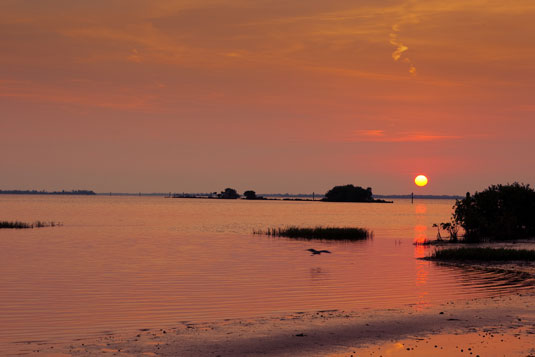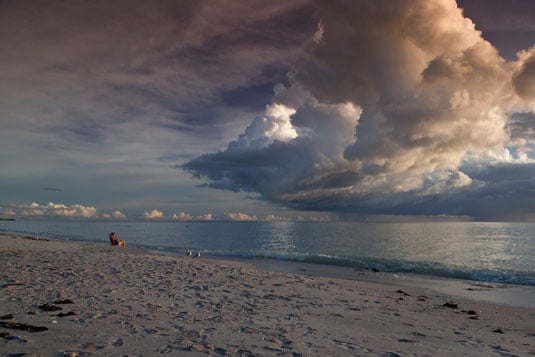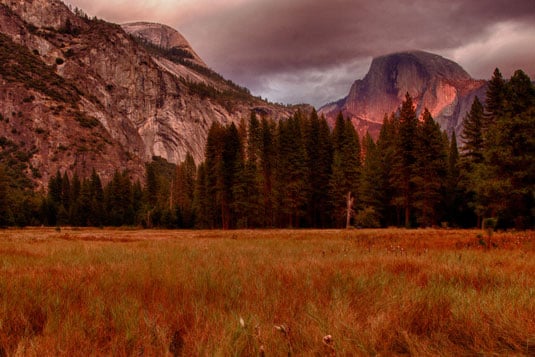Sunrise and sunset are great times to shoot pictures. The sun casts a golden hue on landscapes and seascapes. Add some clouds and you have the recipe for great photographs. However, if you want to get good photos of the sunrise and sunset, you need to do more than just point the camera at the sun and then take a picture.
Photographing into the sun
Sunset is a wonderful time of the day to take photographs. Sunset is the other Golden Hour. Whether you shoot the sunrise or sunset depends on the area in which you live and the landscape features you have. The sun setting over the ocean is an ideal scenario for a great photograph. Of course, the luckiest nature photographers live near the west coast of Florida, or the west coast of the United States. Another alternative is visiting any place where the sun sets over the ocean.

Photographing away from the sun
When you arrive at the place from which you’re going to photograph the sunset, the sun will probably still be fairly high in the sky. Use this time to capture beautiful images by pointing your camera away from the sun. You’ll be rewarded with a landscape that is bathed in warm color that enhances the scenery.
To photograph Golden Hour with the sun at your back, use the same camera settings, with one exception: Skip the reverse neutral density graduated filter. If a sky is full of clouds, you can intensify the blue with a polarizing filter. Note that you get your best results with a polarizing filter when your camera is pointed 90 degrees from the sun.

Beyond the flash of green
The mystical flash of green occurs right as the sun dips below the horizon — it’s the official sunset time. If clouds hover in the sky, don’t pack up your gear when the sun goes down. As long as the clouds don’t go all the way to the horizon, you still have 15 to 20 minutes' worth of picture-taking opportunities.
The sun reflects on the underside of the clouds. As the sun sinks lower, the colors become more intense. Wait patiently and take pictures when you see the color start to intensify. The amount of ambient light decreases fairly quickly, and your camera thinks the scene needs to be brighter than it actually is.
Don’t let the camera ruin your pictures. Review each image on your LCD monitor, and if necessary use exposure compensation to decrease the exposure. You may have to decrease the exposure a couple of times until all the color is gone from the clouds.
You may also experience a phenomenon known as alpenglow, a band of red light on the horizon directly opposite the direction in which the sun sets. This occurs when the sun reflects off the underside of clouds and illuminates prominent features of the landscape. Alpenglow is easier to see when you’re in the mountains. The reflections bathe the mountaintops in red light.


